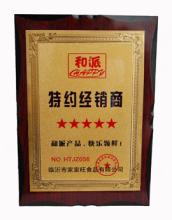Now let us discuss five simple techniques to improve memory:
让我们来讨论五个增强记忆的简单方法吧:
1. Chunking

分组法
Perhaps Chunking is the oldest method used in memorization. In this method, the items to be memorized are divided into small and easily memorizable chunks or groups. This method works best when the order of the items is not important. If possible, organize the material as meaningfully as you can and think out relationships among each group.
“分组法”大概是最古老的记忆方法了。故名思议这种方法就是把需要记住的东西分成几个小组。当需要记忆的材料没有很强的顺序性时,这种方法最有效。如果有可能,把材料分成有意义并且互相之间有关系的几个组。
eg. The list Apple, cucumber, paper, ink, cabbage, banana, grapes, beans, stapler, orange can be better learned by rearranging and applying chunking as: Apple, banana, grapes, orange, cucumber, cabbage, beans, paper, ink, stapler——4 fruits, 3 vegetables and 3 stationery items.
举例:苹果、黄瓜、纸、墨水、卷心菜、香蕉、葡萄、豆、订书机、橘子可以这样分组:苹果、香蕉、葡萄、橘子;黄瓜、卷心菜、豆;纸、墨水、订水——4种水果,3种蔬菜,3种文具。
2. Rhyming
押韵法
This is also one of the popular and oldest methods in memorization. This technique makes use of the fact that we have a natural tendency to remember rhymes and rhythms. Create rhymes will not only aid in improving your memory but in improving your creativity as well.
“押韵法”也是一种相当古老并且流行的记忆法。这种方法基于我们天生容易记住有韵律、有节奏的东西这一事实。创造韵律不仅能帮你增强记忆,还能让你更有创造性。
eg. "Thirty days haveth September; April, June and November; All the rest have thirty-one; February has twenty-eight alone; Except in leap year, then the time; When Febs days are twenty-nine."
3. Mediation/Bridging
搭桥法
In this method, a bridge is built in between the items given to be memorized. This technique is best suited for learning material involving word pairs or material that can be reduced to word pairs. An example often cited by memory experts is the learning of the capital of Poland. The capital of Poland is Warsaw. World War II started with Germany's attack on Poland. Thus it may be arranged as Poland SAW War first. Here, the word pair to be connected together is Poland and Warsaw. The additional information of the World War II is used as a bridge or mediator in bringing these two words together.
这种方法是在记忆材料之间架设“桥梁”,最适合与词组有关或者能够分解为词组的记忆材料。运用这种方法的一个经典例子是波兰首都——华沙的记法。第二次世界大战始于德军对华沙的侵略。所以,可以这样记:华沙最先经历了战争。这里的一对词组是“波兰”和“华沙”,把它们联接起来的“桥梁”是二战。
4. Bed-time Recital
边睡边记法
In this technique, you do your recital or rote learning just before going to bed. The mind in the process of sleeping would then arrange the information in a systematic and effective way when you are sleeping. Psychologists have also found that if you sleep after thinking about your problems there is a better chance that you arrive at a solution the next day.
在睡觉之前背诵、记忆,大脑会在你入睡后对之前输入的信息进行系统、有效的整理。心理学家还发现,如果你在思考问题之后睡上一觉,你就更有可能在第二天醒来以后得到答案。
Steps:
1. Be in a relaxed mood.
2. Write down the things that you are supposed to remember in a piece of paper.
3. Read it aloud (if possible) once or twice and recite it two to three times.
4. Now go to sleep without worrying or thinking about anything.
①放松心情;
②把要记的东西写在一张纸上;
③如果可以,大声朗诵一两遍,再背诵两三遍;
④什么都不要想,放心的去睡觉。
 爱华网
爱华网



